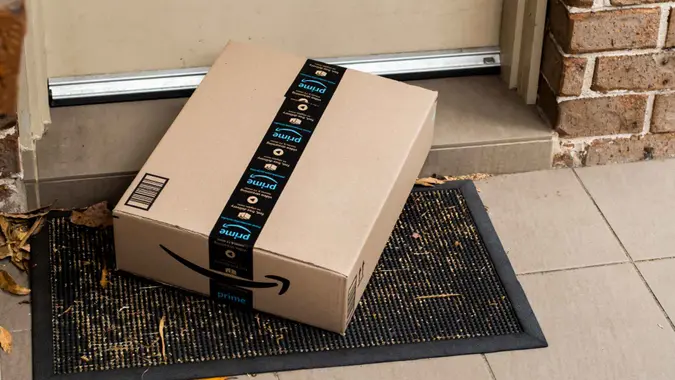Half of Shoppers Are Planning To Spend Less This Holiday Season: How Will That Affect the Economy and Your Wallet?

Commitment to Our Readers
GOBankingRates' editorial team is committed to bringing you unbiased reviews and information. We use data-driven methodologies to evaluate financial products and services - our reviews and ratings are not influenced by advertisers. You can read more about our editorial guidelines and our products and services review methodology.

20 Years
Helping You Live Richer

Reviewed
by Experts

Trusted by
Millions of Readers
Half of U.S. consumers say they plan to buy less overall this year, according to KPMG’s 2025 Consumer Pulse Holiday report.
That may sound like good news for personal budgets. However, economists say a widespread pullback during retail’s busiest time of year can have ripple effects far beyond store shelves.
From slowing economic growth to shifting job opportunities and household finances, here’s how a leaner holiday season could shape the economy and your wallet in unexpected ways.
Holiday Spending Fuels the Economy
Holiday spending isn’t just a seasonal tradition; it’s a major driver of the retail sector and the national economy.
“On average, around 20 percent of annual sales occur around the holiday season. These sales are also a barometer of the consumer’s financial state and their overall sentiment,” said Wayne Winegarden, economist at Pacific Research Institute.
“If shoppers spend less, this will be a negative sign that could materially impact businesses expansion and investment plans,” he added.
Less Spending Could Impact Growth
A holiday pullback may reveal cracks in consumer strength. Winegarden said strong spending earlier in the year may have been driven by pre-buying ahead of tariffs, not sustainable demand. A slowdown now could linger into 2026, a bearish sign for the broader economy.
Economists are also tracking indicators that reveal how much financial strain households are under. These include overall spending levels, debt usage and whether delinquencies and charge-offs are rising.
“The financial health of households is very important to watch to determine whether consumer spending is sustainable going forward,” Winegarden said.
Consumers Are Spending Smarter
Inflation and tariffs are reshaping holiday shopping trends, prompting consumers to become more strategic about how and when they spend.
According to the 2025 holiday shopping survey by PissedConsumer.com, a consumer review platform, financial pressures are shaping how Americans shop this season.
“When asked how consumers plan their purchases, 48.1% said they wait for sales and 60.6% also noted that they plan to save on the holiday dinner by cooking at home,” said Joanna Clark-Simpson, head of consumer research at PissedConsumer.com. “These trends are reflecting a shift toward intentional and budget-conscious purchases.”
Spending Pullback Hits Jobs and Markets
A weaker holiday season doesn’t just affect store shelves. It can ripple through the job market, household incomes and financial markets.
Economists say spending pullbacks are often a sign that families are under financial strain, which can have broader economic consequences.
“The slowdown would be an indication that households are feeling financially constrained,” Winegarden said. “The consequences from those constraints will likely be slower job growth, less seasonal work and slower income growth. Total investment by firms will also decline, which would be another bearish sign for the economy.”
How To Navigate a Leaner Holiday Season
A cautious spending environment doesn’t have to derail holiday plans. Consumers can get ahead by setting realistic budgets, prioritizing essential purchases and avoiding high-cost debt to fund celebrations.
Starting early and taking advantage of seasonal discounts can help stretch dollars further, while paying with cash or debit instead of credit or buy now, pay later plans can prevent lingering balances in the new year.
A slower holiday season can also be a good time to refocus on long-term financial goals, like paying down debt and rebuilding savings, heading into 2026.
More From GOBankingRates
 Written by
Written by  Edited by
Edited by 

























